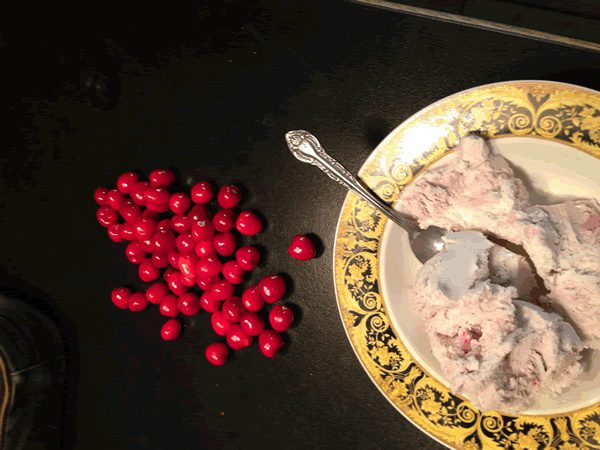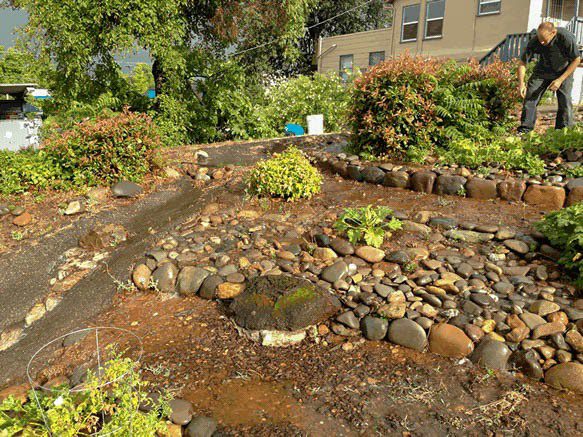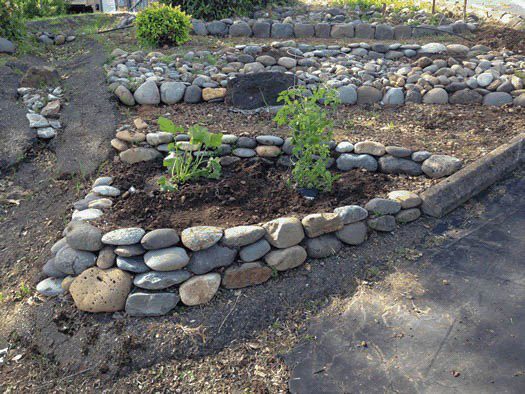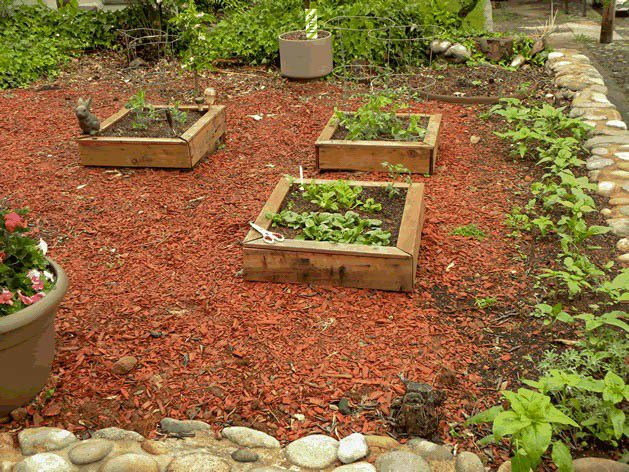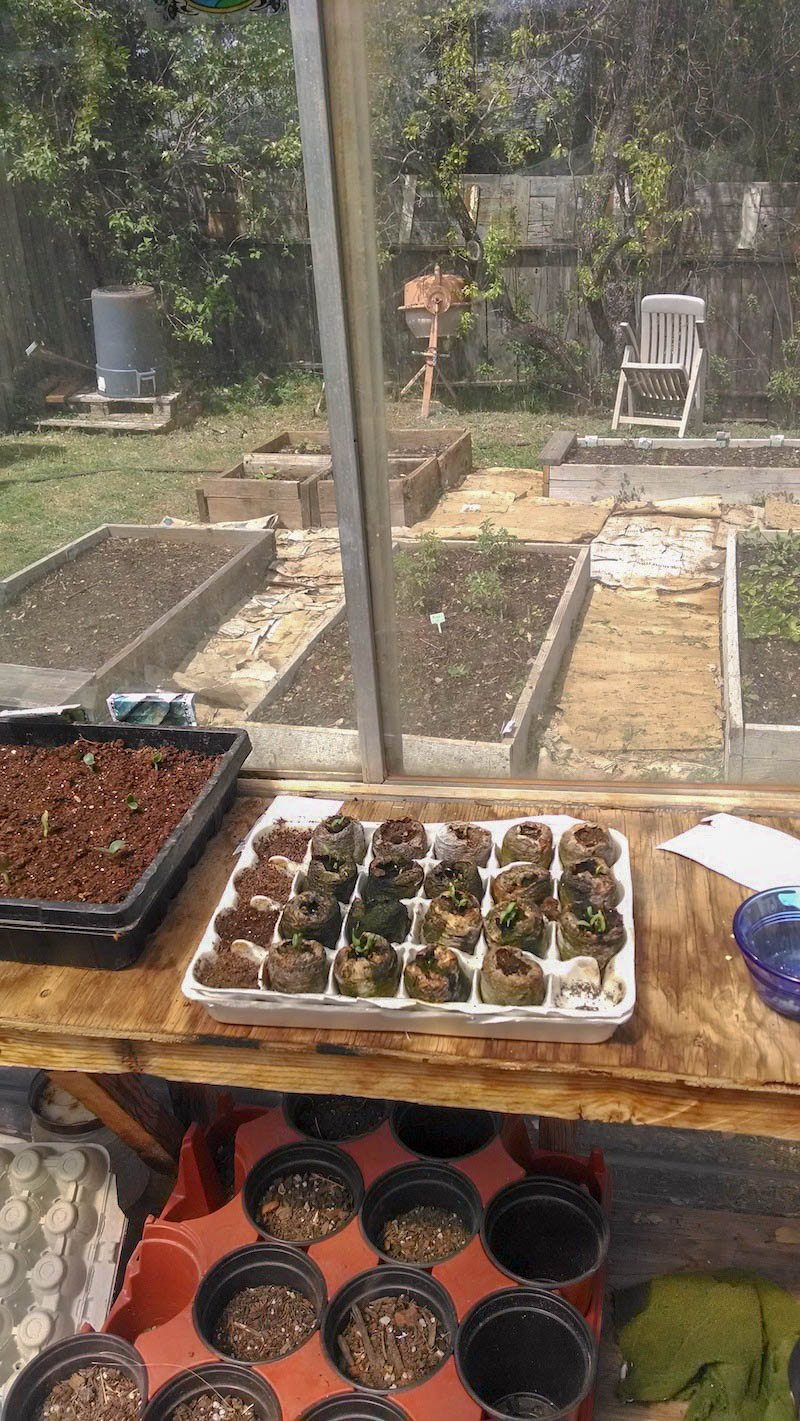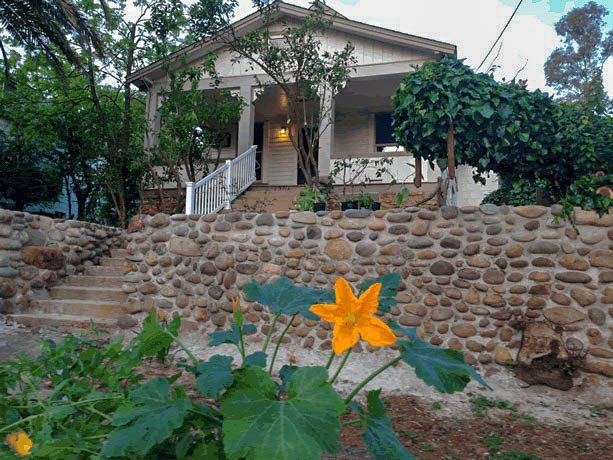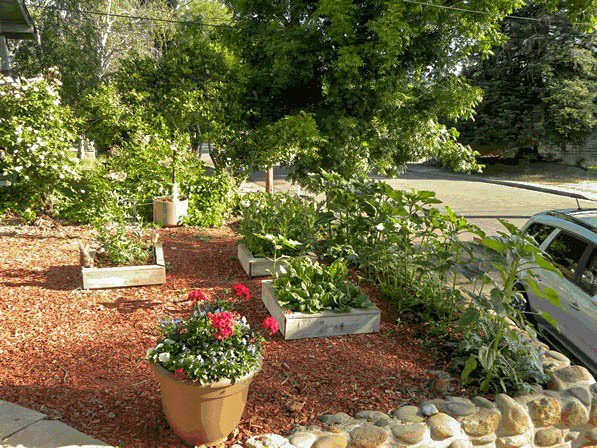Food Not Lawn
Using Water For Food
The built environment is a seamless web of systems joined for the convenience of our use. Sometime the joining isn’t so pretty, or it’s pretty stupid. Sometimes the joining just seems right with the world, unique and proper for place. That’s how I see Food Not Lawn and Laundry to Landscape, as a very nice joining of people and their place on the planet.
On a practical level, the goal of affordable housing is to minimize costs while maximizing the value proposition. Respecting utilities such as water and sewer, Food Not Lawn (FNL) and Laundry To Landscape (L2L) have very practical impacts. On one hand, water use is diminished due to the reduced presence of giant green lawn watering. On the other hand, water flowing to the sewer plant is vastly diminished given the presence of L2L systems.
Diminished use of utility systems should translate into diminished fee at utility hookup departments. Fair accounting would recognize that the modern, small Energy Star apartment, without a lawn, with L2L, using on-demand water heater located close to faucets, with aerating faucets, will use approximately 1/3 of the projected amounts as currently expressed in Redding’s fee structures.
Simple lessons learned from Food Not Lawn: It’s not free. You pay, and pay handsomely for fresh food.
Simple lessons learned from Laundry To Landscape: Beautiful, but plan for soaked winter soils.

